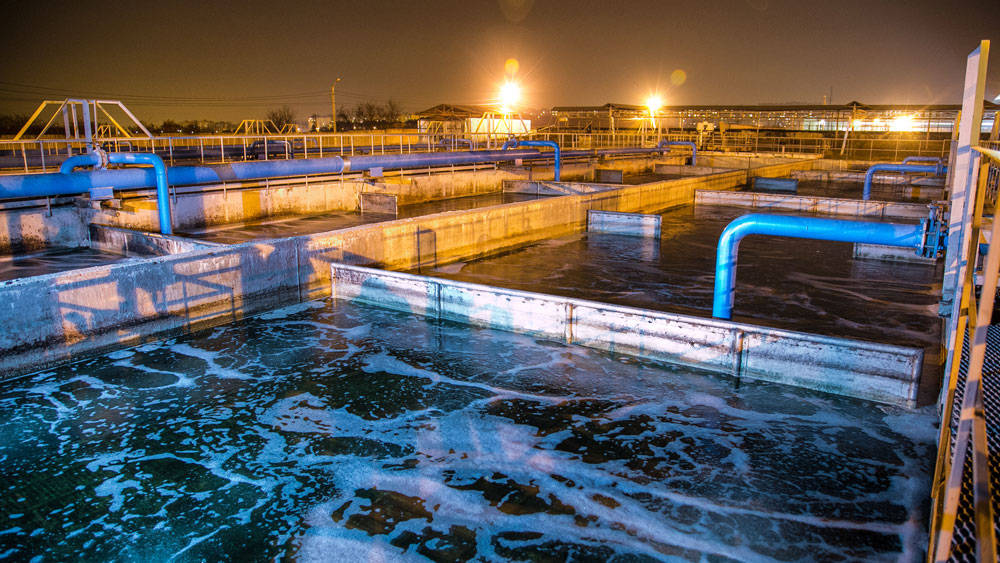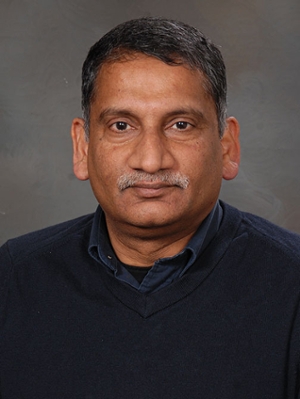
Clean drinking water is necessary for sustaining life.
As natural freshwater sources such as springs, lakes and rivers become contaminated because populations and pollution continue to increase, finding innovative solutions to enhance the purification process of water is becoming more imperative each day.
Funded by the National Science Foundation, Dr. Shankar Chellam, J. Walter "Deak" Porter '22 & James W. "Bud" Porter '51 Professor in the Zachry Department of Civil and Environmental Engineering at Texas A&M University, is leading collaborative efforts to investigate how to enhance water filters that turn wastewater to drinking water.
The collaborators include Dr. Nick Cogan, a professor in the mathematics department at Florida State University, and field collaborators from Orange County, California, and El Paso, Texas, municipalities.
Their research and filter-protection plans will not only help improve the process of transforming wastewater into a clean, recyclable source of drinking water, but will also aid purification companies in cutting down on the cost of water filtration.

“We are now forced to identify other sources for drinking water. By definition, this means we are going to exploit waters with a higher level of pollution. One such supply is our own municipal wastewater,” said Chellam. “My group is working on the advanced purification of this water, and in some sense, increasing the reliability of the treatment so that you will get safe drinking water regardless of the source.”
Chellam said that wastewater treatment for potable water production has to be much more meticulous than traditional drinking water treatments due to the impaired quality of the source. To compensate for this, water resource facilities will add multiple points of redundancy to the process to be absolutely sure that the final product is pure, safe and ready to drink.
An integral part of this process involves running water through a series of water filters that catch debris and other contaminants similar to a water filter in a refrigerator or pitcher.
“We are trying to improve the life and performance of these filters,” said Chellam. “Municipalities benefit from collaborations with universities like Texas A&M, which can provide them advanced instrumentation to analyze these filters as well as the support of skillful and dedicated researchers.”
By breaking open both a new and a used filter and comparing the two, Chellam and his team have been able to discover how much and what materials are clogging up the filter, making it unusable and causing the need for repair.
“What my student found is that when you scrape the gunk off of the filter, you will find a significant amount of bacteria,” said Chellam. “This is what messes up the water filtration during wastewater reclamation or potable reuse of municipal wastewater.”
In order to unclog these filters and extend their lives, effectiveness and functionality, Chellam and his team have a two-fold plan.
They will first fortify and protect the high-grade filter by utilizing coagulation technologies and pre-filtering the water through a coarse wall of material that will catch aggregated contaminants before they can reach the filter. While this material will not collect all of the debris in the water and will eventually collect too much debris to allow water through, it will reduce the amount of debris that the current filters are subjected to.
Then, once the wall and filter become clogged, the water will be diverted down another waterway and the filter will be taken offline to be cleaned with a chemical mixture that combats the type of contaminants that are causing the clogging.
“One of the advantages we have is that, because we are able to cut open the filter and do these analyses, we can, to some extent, tailor the cleaning agent to what we find,” said Chellam. “So, if we find a certain kind of foulant that is clogging up the filter, we can try to match it to the kind of acid or cleaner that will remove that particular substance.”
Through this process the filter and coarse material will be cleansed, unclogged and reintroduced into the flow, transforming wastewater into safe drinking water.
“We all want to work on meaningful projects and that’s why I became an environmental engineer,” said Chellam. “I got my undergraduate degree in mechanical engineering and worked for a manufacturing plant where I was responsible for the maintenance of the machines, including their waste. That was when I realized I could either make money and put my philosophy aside or try and follow a different path and look at water/wastewater treatment. That’s what I did.”